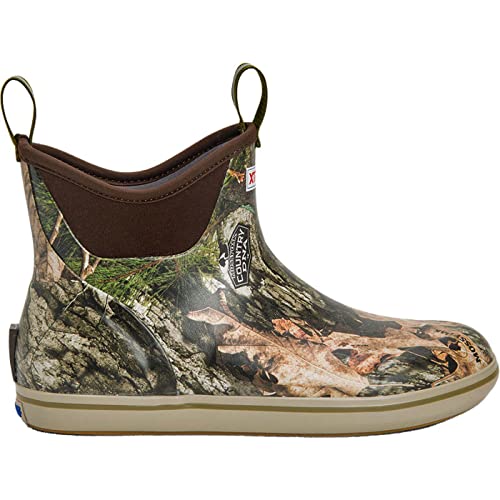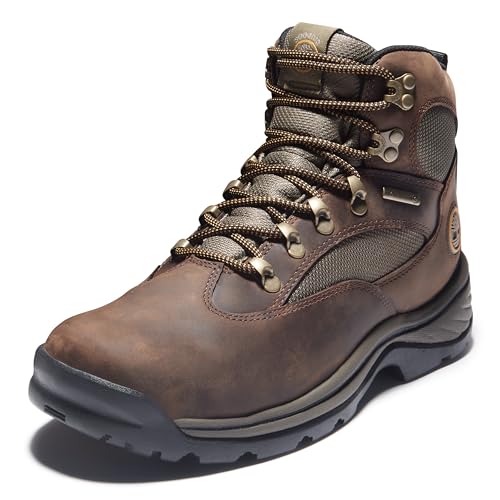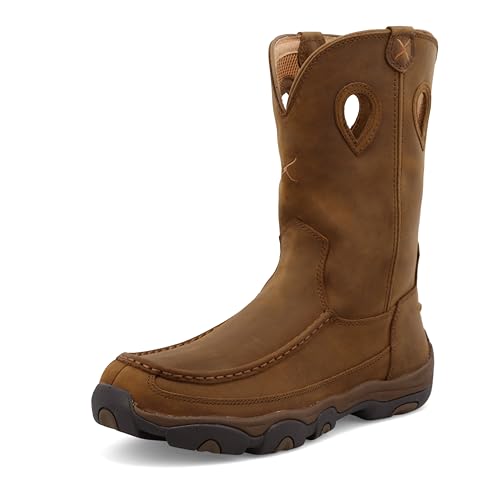There’s a specific kind of frustration that comes from being let down by your gear, and nowhere is that feeling more acute than with your footwear. I’ve been there countless times—miles into a demanding hike or deep into a long day on the training field, when the initial comfort of a boot gives way to painful hot spots, or the promised “rugged durability” reveals itself as failing seams and torn fabric. The search for the perfect boot often feels like a balancing act on a knife’s edge: you need something light enough to keep you fast and agile, yet supportive enough to protect your ankles on uneven terrain. You want it to be breathable for hot climates but durable enough to withstand constant abuse. Not finding this balance leads to more than just discomfort; it leads to fatigue, decreased performance, and a genuine risk of injury. It’s this high-stakes search that brings us to specialized footwear like the Oakley Light Assault 2 Boot Coyote, a boot designed explicitly for those who refuse to compromise on speed and mobility.
What to Demand from a High-Performance Tactical & Hiking Boot
A high-performance boot is more than just an item of clothing; it’s a critical piece of equipment that serves as the foundation for every step you take. Whether you’re a soldier on a ruck march, a law enforcement officer on patrol, or a serious hiker pushing for a summit, the right boot is a key solution for preventing fatigue, enhancing stability, and protecting you from the elements. The main benefits are threefold: performance enhancement through weight reduction, injury prevention via proper support, and operational readiness by ensuring comfort over extended periods. A boot that fails in any of these areas becomes a liability, not an asset.
The ideal customer for this type of product is someone who prioritizes mobility and agility. This includes military personnel who need AR 670-1 compliant footwear, avid trail runners who want more ankle support than a standard shoe, or outdoor professionals who cover long distances daily. It is a tool for those who measure performance in speed and endurance. Conversely, this boot might not be suitable for those who require maximum ankle rigidity, absolute waterproofing for swampy conditions, or the bomb-proof durability needed for heavy construction or mountaineering. For those users, a more traditional, heavier leather boot from a brand specializing in rugged workwear or mountaineering might be a better, albeit heavier, alternative.
Before investing, consider these crucial points in detail:
- Weight & Agility: This is perhaps the most critical factor for a light assault boot. Every ounce on your feet is equivalent to several ounces on your back in terms of energy expenditure. Look for boots under 16 ounces per boot if speed is your primary goal. This often means a trade-off in heavy armor-like protection for a more athletic, responsive feel.
- Performance & Traction: The outsole is where the rubber meets the road—or trail. An effective boot needs an aggressive lug pattern for grip on loose dirt, mud, and rock, but it also needs to be flexible enough for a natural stride. The material, often a blend of rubber and EVA (Ethylene Vinyl Acetate), determines the balance between cushioning and ground-feel.
- Materials & Durability: The uppers are your first line of defense. Suede and Cordura nylon are common choices for lightweight boots, offering excellent breathability and flexibility. However, these materials can be less abrasion-resistant than full-grain leather. Pay close attention to the quality of the stitching and the construction of the lace eyelets, as these are common failure points under stress.
- Fit & Maintenance: A boot is useless if it doesn’t fit properly. Look for models known for a specific fit (e.g., narrow or wide) and always read feedback regarding sizing, as tactical boots can run differently than athletic shoes. Maintenance involves regular cleaning to preserve the materials and treating suede or leather to maintain its integrity, though a key benefit of this style is its minimal upkeep requirement.
Keeping these factors in mind, the Oakley Light Assault 2 Boot Coyote stands out in several areas, particularly its phenomenal weight and athletic design. You can explore its detailed specifications and see the design for yourself here.
While the Oakley Light Assault 2 Boot Coyote is an excellent choice for a specific user, it’s always wise to see how it stacks up against the competition. For a broader look at all the top models, especially if you’re just starting, we highly recommend checking out our complete, in-depth guide:
- Lightweight 12 L Hydration Backpack: Super lightweight 8.5 oz hydration pack backpack with 2 L water bladder. Waterproof and tear-resistant fabric, PU...
- ESSENTIALS FOR EMERGENCY: Everything you need is in this first aid kit! Our kit includes over 150 professional-grade medical and safety supplies, all kinds...
- Stay cool, fresh and comfortable all day with our lightweight, breathable, water-resistant and quick-dry women's hiking pants.
Unboxing the Oakley Light Assault 2: First Impressions and Key Features
The first thing that struck me upon unboxing the Oakley Light Assault 2 Boot Coyote was its almost unbelievable lack of weight. At a mere 14 ounces per boot, it felt more like a high-top sneaker or a basketball shoe than an 8-inch tactical boot. This isn’t an exaggeration; picking it up, you immediately understand that this footwear was engineered with one primary goal in mind: speed. The Coyote color is a perfect, uniform shade that meets military regulations, and the combination of durable suede and what feels like a rugged synthetic textile gives it a modern, athletic look. There’s no break-in stiffness; the entire upper portion of the boot is pliable and flexible right out of the box. The EVA midsole and outsole feel cushioned yet responsive, promising a comfortable ride. The lacing system is straightforward, with a mix of fabric loops and speed hooks at the top for a secure fit. Compared to its predecessor and other heavier-duty military boots, the Light Assault 2 is in a class of its own when it comes to feeling like an extension of your foot rather than a burden on it.
What We Like
- Extraordinarily lightweight construction (14 oz) enhances speed and reduces fatigue.
- Remarkably comfortable right out of the box with minimal break-in required.
- Excellent breathability, making it ideal for hot and arid environments.
- Compliant with military regulations (AR 670-1), making it a top choice for service members.
What We Didn’t Like
- Significant durability concerns, particularly with the eyelets tearing under tension.
- Water resistance is minimal to non-existent, despite some product descriptions.
In the Field: A Deep Dive into the Oakley Light Assault 2 Boot’s Performance
A boot’s true character is revealed not on a store shelf, but in the dirt, on the rocks, and over miles of unforgiving terrain. We put the Oakley Light Assault 2 Boot Coyote through its paces in a variety of conditions, from long-distance ruck marches on pavement and trails to dynamic movements in a field environment. Our goal was to push past the spec sheet and discover how its design choices translate to real-world performance, and to see if the trade-offs made for weight reduction were ultimately worth it.
The Featherweight Advantage: A Masterclass in Mobility
The single most defining feature of this boot is its weight. At 14 ounces, it fundamentally changes the user’s experience. On a long ruck, the difference between this boot and a standard-issue 2-pound boot is monumental. It’s the difference between feeling your feet drag after six miles and feeling capable of picking up the pace. We confirmed what many users have reported: these boots feel like running shoes. One soldier noted wearing them for a 4-mile ruck on the first day without a single red spot or blister, a testament to their immediate comfort and athletic design. This is made possible by the EVA midsole, which provides shock absorption akin to a trainer, and the flexible suede/synthetic upper that moves with your foot instead of against it. For any activity where speed and endurance are paramount—be it military PT, fast-paced patrols, or competitive events—the Oakley Light Assault 2 Boot Coyote provides a tangible edge. The energy savings over thousands of steps are real and measurable, allowing you to stay faster and more effective for longer.
Comfort and Fit: A Running Shoe in Disguise
The comfort of the Oakley Light Assault 2 is immediate and impressive. The interior is well-padded around the collar and tongue, and the cushioned sole makes walking on hard surfaces feel significantly less jarring. We found the fit to be generous, particularly in width, which aligns with feedback from users who described them as “very very wide foot friendly.” However, this generous sizing is a critical point for new buyers. Many users, both male and female, reported that the boots run large, often by a half or even a full size. One user who wears a 10.5 in other shoes found the 9.5 to be a perfect snug fit. We strongly recommend sizing down, especially if you have a narrow foot, to avoid excessive movement inside the boot. The one area where the comfort equation falters is the insole. As one experienced user pointed out, the factory insole offers virtually no arch support. While the boot is still comfortable due to the firm-yet-cushioned midsole, those with high arches or who require orthopedic support will almost certainly need to invest in a quality aftermarket insole. This is a common cost-saving measure in footwear, but for a boot in this category, it’s a notable omission.
The Durability Dilemma: Trading Ruggedness for Speed
This is where our review must take a critical turn. While the Oakley Light Assault 2 excels in weight and comfort, its long-term durability is a significant concern, a sentiment echoed strongly in user feedback. The trade-off for its lightweight, flexible design appears to be a sacrifice in resilience. The most frequently cited failure point is the lacing system. Multiple users, including one who used them for “non-hazardous light duty,” provided photographic evidence of the fabric eyelets tearing away from the suede upper after just a few months. This issue seems to be exacerbated when the boots are laced tightly to secure a good fit, especially for those with narrower feet. This is a critical design flaw. A boot’s lacing system is fundamental to its function; if it fails, the boot becomes unusable.
Beyond the eyelets, other users reported stitching on the inside of the boot breaking in less than a month of basic training. While our test pair held up during our evaluation period, the sheer volume of consistent feedback on this issue suggests a pattern of material and construction choices that prioritize lightness over longevity. The suede itself holds up reasonably well to scuffs, but it shows dirt easily and offers little in the way of water resistance. One user accurately described the water resistance as “negligible,” noting that walking through wet grass was enough to soak the interior. If you are considering this boot, you must go into it with the understanding that you are buying a high-performance, almost disposable piece of athletic equipment, not a multi-year investment in rugged footwear. For those who need a boot to last, the Oakley Light Assault 2 Boot Coyote may require a careful cost-benefit analysis.
Traction and Ankle Support: Agile but Unforgiving
The outsole of the Light Assault 2 provides excellent grip across a range of surfaces. The lug pattern is aggressive enough to bite into loose soil and gravel, while the flat, high-contact areas perform well on pavement and rock. We felt confident in the boot’s traction during fast directional changes and on moderate inclines. The EVA material provides a good feel for the ground beneath your feet, enhancing agility. However, the 8-inch shaft height can be slightly misleading. While it provides a barrier against debris and meets uniform regulations, the flexible materials offer minimal ankle rigidity. One user astutely pointed out that while the lightness is great for rucks, “you can twist your ankles more from the lesser support.” This is a crucial distinction. The boot does not provide the stiff, locked-in support of a traditional leather hiking or combat boot. It relies on the wearer’s own strength and stability. For a conditioned athlete or soldier, this is often acceptable and even preferable. For a beginner or someone prone to ankle rolls, this lack of rigid support could be a significant hazard on treacherous terrain.
What Other Users Are Saying
Scouring feedback from a wide array of users confirms the dual nature of the Oakley Light Assault 2 Boot Coyote. The positive sentiment is almost exclusively focused on its weight and comfort. One soldier summed it up perfectly: “These are the lightest boot that still complie with army regulations. This is great for me on ruck marches… these shoes are super comfortable.” Another user in a completely different field, a roofing contractor, was similarly impressed, stating, “after a few weeks they are still great 👍”. This highlights the boot’s versatility for any job that requires agility.
However, the negative feedback is just as consistent and centers squarely on durability. A user who wore them just five days a week in a light-duty role was “disappointed with their durability,” sharing a photo of a torn lacing hole after only four months. Another reported, “Within the first 3 months they started tearing at the eyelet.” This isn’t an isolated incident; it’s a recurring theme that potential buyers cannot ignore. The consensus is clear: you are buying a boot that feels incredible on your feet but may not last nearly as long as its price tag would suggest.
How Does It Compare? Oakley Light Assault 2 Boot Coyote vs. The Competition
No product exists in a vacuum. To truly understand the Oakley’s place in the market, it’s essential to compare it to other popular alternatives, even if they serve slightly different purposes. This comparison highlights who the Oakley is truly for—and who should look elsewhere.
1. Xtratuf Men’s 6 Inch Ankle Deck Boot
- CRAFTED FOR SPORT AND RECREATIONAL FISHERMEN - XTRATUF Deck Boots have been crafted specifically for sport and recreational fishermen; anglers are...
- WATERPROOF BOOTS - Handcrafted from natural rubber, these boots have lightweight design with high traction Chevron outsole; this performance boat boot is...
The Xtratuf Ankle Deck Boot occupies a completely different space. This is a 100% waterproof, slip-on boot designed for wet, slippery surfaces like boat decks or docks. Its primary strengths are its absolute water barrier and ease of use. Compared to the Oakley, it offers zero breathability and is not designed for walking long distances or on uneven terrain. A user would choose the Xtratuf for fishing, boating, or any job where standing in water is a certainty. They might choose the Oakley for a hot, dry environment where breathability and speed are paramount, and getting wet is not a primary concern.
2. Timberland Chocorua Trail Mid Waterproof Boots
- Upper made with waterproof premium Timberland leather and mesh fabric
- Rustproof speed lace hardware with lace hooks at top
The Timberland Chocorua represents a more traditional approach to hiking footwear. Made with full-grain waterproof leather and a Gore-Tex membrane, it prioritizes durability and weather protection above all else. It is significantly heavier than the Oakley and requires a break-in period. However, it provides far superior ankle support and will withstand years of abrasive use on rocky trails. A hiker heading into unpredictable mountain weather or carrying a heavy pack would be better served by the Timberland. The Oakley is for the user who is “packing light and moving fast” and is willing to sacrifice the Timberland’s bomb-proof construction and waterproofing for a massive gain in agility.
3. Twisted X Mhkb002 Men’s Boots
- Full-grain leather vamp and 11" shaft.
- Reinforced pull-holes.
The Twisted X Mhkb002 is a hybrid hiker-work boot with a distinct western influence. It focuses on all-day comfort for standing and walking, featuring a robust, supportive sole and durable leather construction. It’s built for comfort and longevity in a work environment, such as a ranch, workshop, or light construction site. It is much heavier than the Oakley and lacks its athletic, running-shoe feel. A buyer would choose the Twisted X for a boot that provides sturdy, long-lasting support for a full day on their feet at work. The Oakley, by contrast, is a specialized tool for dynamic, athletic activities, not for static standing or heavy-duty labor.
Final Verdict: Who Should Buy the Oakley Light Assault 2 Boot Coyote?
After extensive testing and analysis, our verdict on the Oakley Light Assault 2 Boot Coyote is clear: it is a brilliant but flawed piece of specialized equipment. It is, without a doubt, one of the lightest, most comfortable, and fastest 8-inch boots on the market. For military personnel who need an AR 670-1 compliant boot for ruck marches and PT, or for anyone whose activities demand sneaker-like agility with the height of a boot, it is an exceptional choice. The out-of-the-box comfort is second to none, and the reduction in fatigue over long distances is a significant performance enhancer.
However, this performance comes at a steep price in durability. We cannot recommend this boot to anyone who needs a single, long-lasting piece of footwear for heavy, daily abuse. The consistent and widespread issues with tearing eyelets and failing stitching mean that you should view this boot as a consumable item with a limited lifespan. If you understand this trade-off—if you are willing to potentially replace them more frequently in exchange for top-tier lightweight performance—then you will be thrilled with what the Oakley Light Assault 2 offers.
If you’ve decided the Oakley Light Assault 2 Boot Coyote is the right fit for your mission-specific needs, you can check its current price and purchase it here.
Last update on 2025-10-16 / Affiliate links / Images from Amazon Product Advertising API







